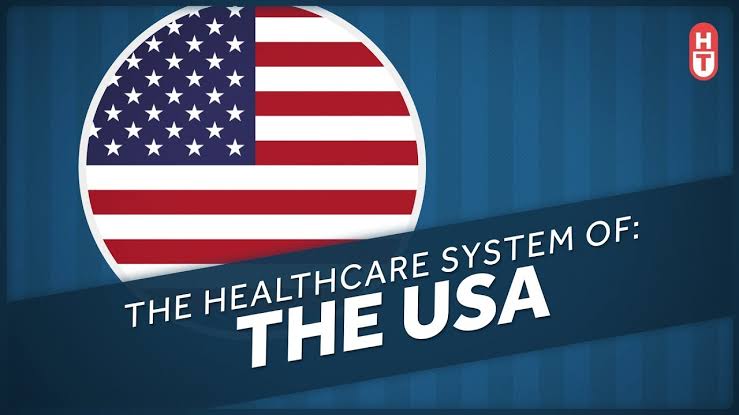Almost all sides agree that the health care system in the United States, which contributes about 17% of GDP, suffers from several problems. High costs, low quality, confusing insurance and co-payments even for experts, and the growing gap between rich and poor are just a few of those problems.
However, this ancient system reflects the country’s constitutional foundations and political culture that all involve serious skepticism about government intervention, contempt for central authority, as well as a glorification of individual liberties and personal responsibility.
Translating this ideology into a modern state is a complex endeavor that often leads to formulations similar to Rube Goldberg’s visions, and this may not be more evident than in the US health care system. The results are a mixture of uncoordinated and often ineffective programmes, which are not inclusive, are too costly and often provide low quality of care.
The struggles of the past continue in the present, as we have noticed in the dozens of failed attempts made by the Republicans to repeal and replace the Affordable Care Act, and the administration of President Barack Obama signed it.
More generally and ideologically, the country has failed to reach consensus regarding the appropriate role of government in providing health care to its citizens. On the political front, reforming any part of the health care system becomes a contentious topic. But in practice, government interference, which is often overlooked, is ubiquitous. In fact, governments at both the state and federal levels have found an impact on every component of the US health care system.
fragmented system
Governments have three main options for providing benefits. They can regulate the behavior of private entities, provide services directly, or provide financing only through the provision of services by other entities. State and federal governments in the United States rely on all three options.
Today, half of the American people get insurance through employers, and they are subject to a web of local and federal regulations that are often complex depending on the nature of the arrangements.
Over time, however, the federal government has played an increasingly important role in insurance regulation, culminating in the recent passage of the Affordable Health Care Act in 2010. The federal government also offers generous tax incentives to encourage employer-provided health insurance programs at an annual cost of more than $260 billion. .
Despite regulatory measures and financial support, more than half of Americans are not covered by employer-provided insurance, which requires other, more effective forms of government involvement.
Various plans for the elderly, poor and veterans
Pure federal medical care, Social Security, and “one-pay” arrangements include elderly Americans, some people with disabilities, and those diagnosed with advanced renal disease, all of which make up about 14% of the population.
Because the system in its design separates hospital and doctor coverage, all working-age Americans are required to pay the system that gives them hospital insurance when they turn 65. The volunteer doctor and prescription drug coverage are subject to a combination of individual premiums and government subsidies. Many seniors choose to purchase additional insurance protection to offset the often limited benefits under these programs. Eligible individuals can alternatively choose to get comprehensive coverage through private insurance companies in a program called Medcare Advantage.
The foundations for coverage for the poor and semi-poor were established through a joint federal government program called Medicaid, which provides coverage for about 20% of Americans. In the absence of constitutional power to compel states to take action, the federal government seeks to persuade states to cooperate by bearing the majority of costs and giving them broad powers in structuring their individual programs. As a result, programs vary greatly between states, in terms of who qualify and the benefits they receive.

One exception to these measures is the way America provides health care to its veterans. Interestingly, in a procedure that can only be described as socialist, America’s veterans are able to obtain comprehensive services, often for free, through a nationwide network of wholly owned and operated federally operated clinics and hospitals. Similar arrangements exist for Native Americans.
Those who are excluded from the various limited arrangements are left to seek coverage themselves from private insurance companies. With insurance market reforms and financial support for the Affordable Care Act, today about 7% of Americans are able to purchase insurance privately, while 9% still do not have health insurance. Another set of programs seek to provide limited benefits to these individuals, through emergency rooms, government-supported private community health centers and hundreds of city, county, state-owned clinics and hospitals, and public university systems.
?Has the Affordable Care Act changed anything
When the Affordable Care Act was passed in 2010, proponents hailed it as transforming the United States in line with its industrialized peers. As for the critics, they considered it a threat and described it as the last step towards socialism in America.
Neither side was correct in his assessment.
The Affordable Care Act was seen as a continuation of a long series of gradual, trial-and-error adjustments to the conditions in the twentieth century American system, particularly when the law was used to expand access to health care. For the most part, the Affordable Care Act contributes to the continuity of a system made up of various private and public components by combining some reforms in the insurance market, though important, with additional financing.
As for Medicaid, it simply added more federal funding, to get more people into the program. For people who buy insurance themselves, it has facilitated the insurance purchase process by creating electronic marketplaces and providing financing to low-income individuals in the form of subsidies for health insurance premiums and costs incurred by people at their own expense. Most importantly, it initiates significant insurance market reforms aimed at facilitating access to services, including requiring insurance to be provided regardless of pre-existing conditions, by limiting the price consumers can pay based on gender and age, and by requiring a limit Minimum services listed, and others.
If the Affordable Care Act were to be fully implemented, millions of Americans would be left without insurance, and thorny issues of quality and costs would largely be left unaddressed.
The future… is shrouded in mystery
The American healthcare system is a complex labyrinth. As it develops over time, we can see gradual and random adjustments to changing conditions over time, without rationality or prior comprehensive planning.
In theory, one could easily imagine a simpler approach; For example, the United States could adopt a “one-way payment” system similar to the systems in many other rich industrial countries. In practice, however, limited national power, stark ideological divisions over the appropriate role of the national government in health care provision, and the emergence of diverse personal interests, run counter to a continuing evolutionary approach that is politically excluded.
Under such a system, exploiting certain aspects of the US health care system and blaming the other side is a political imperative, and no single party can fix the system on its own without risking the wrath of voters. Indeed, there is no basic ideological consensus about what kind of health care system the United States should have.
Under these circumstances, neither party has much incentive to cooperate in order to initiate the targeted reforms needed to improve quality, access to services, and costs. Thus, we are left with nothing but a very expensive, and often of poor quality, system that deprives millions of Americans of access to proper care

